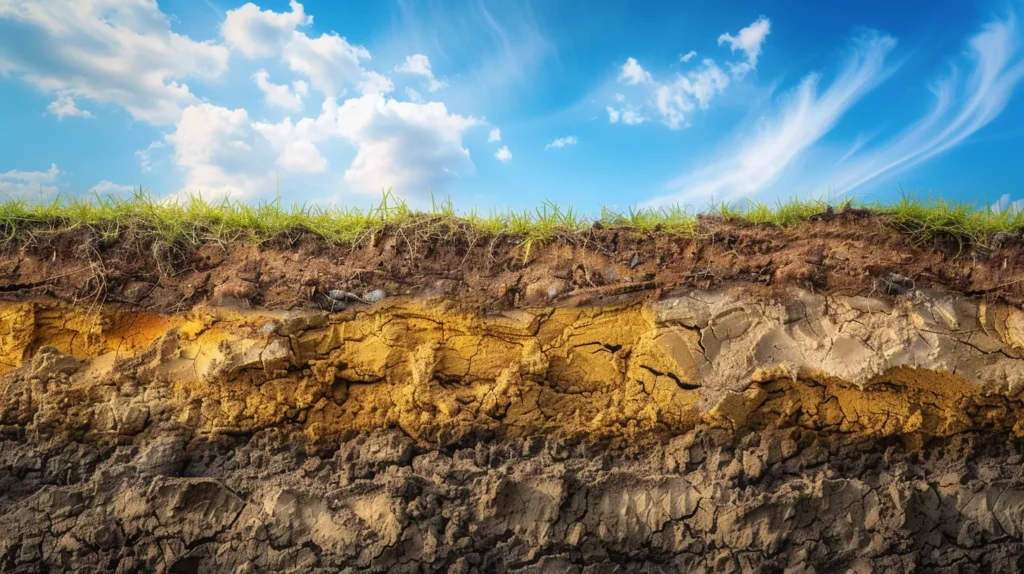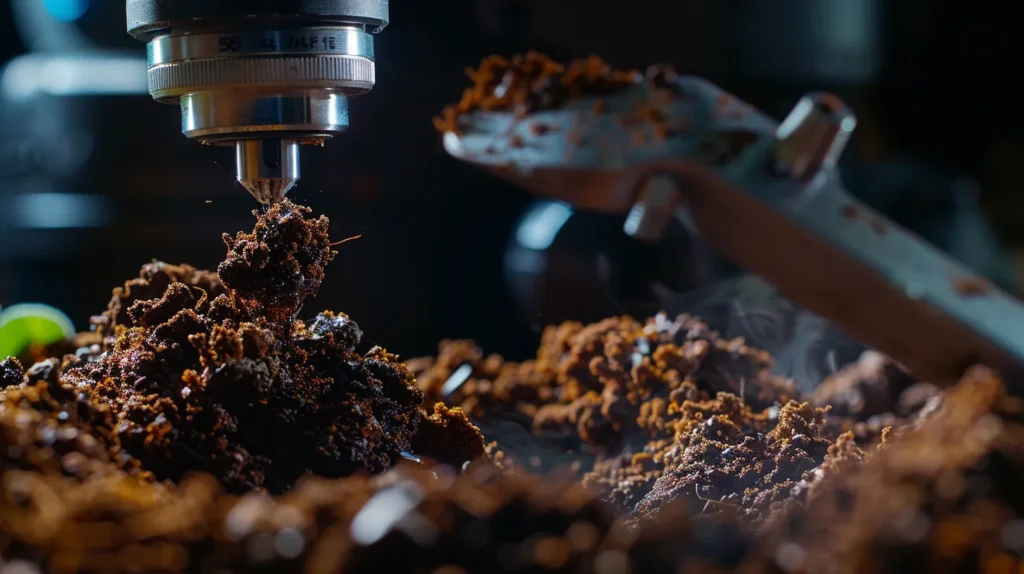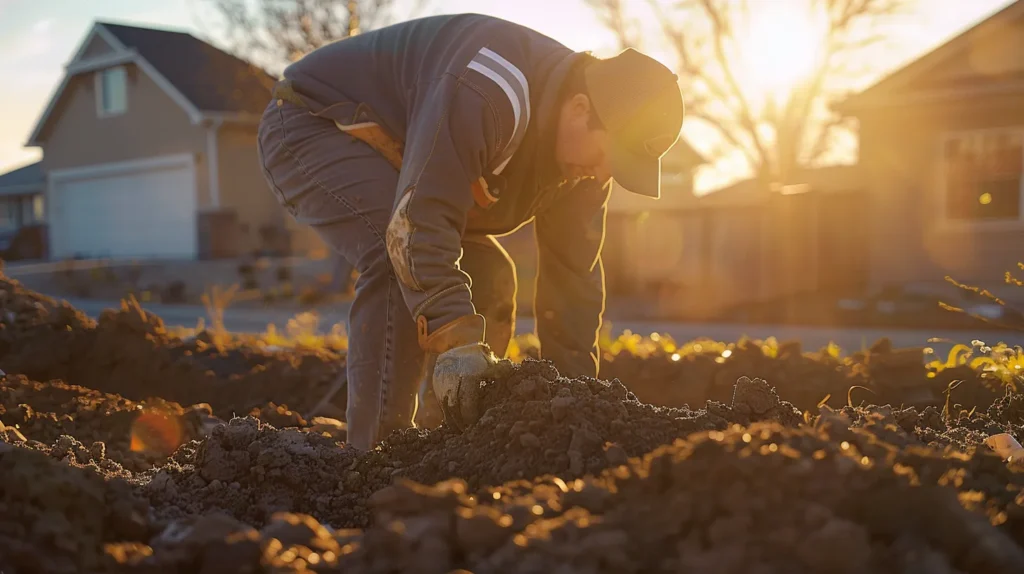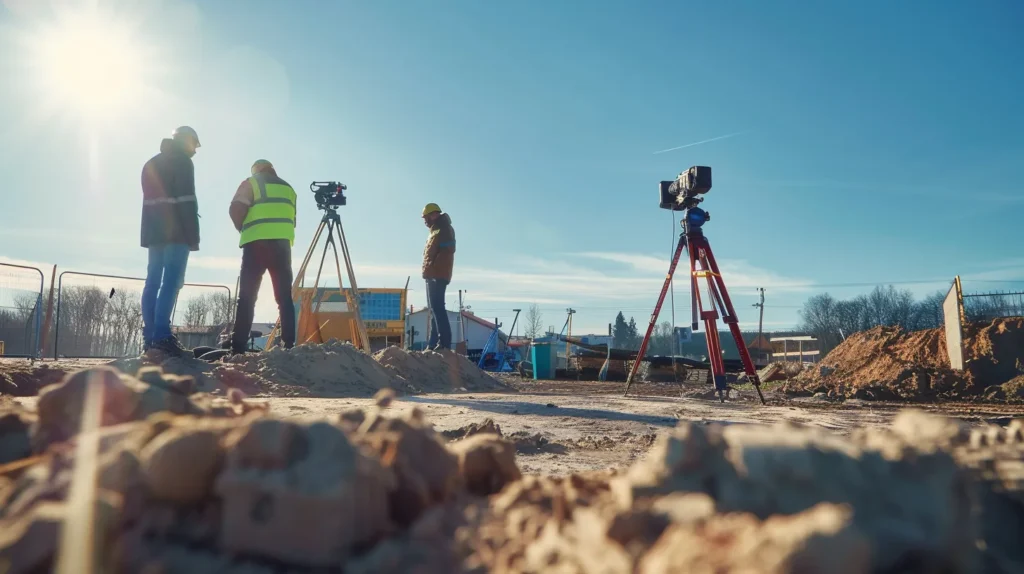Factors Impacting Foundation Repair and Maintaining Stability
Assessing Soil Types and Their Impact on Foundation Repair and Stability
Are you troubled by uneven floors or shifting walls? This post assesses soil types and their impact on foundation repair and stability. It outlines key soil characteristics, explains the need for soil testing, and reviews factors that affect repair success. With expertise from a family owned business since 1982 that offers a lifetime warranty on work and 100% financing, Houston homeowners gain clear guidance to solve common foundation issues.
Key Takeaways
- soil composition significantly affects foundation performance and repair measures
- tailored methods address issues specific to clay, sand, and silt
- regular soil testing guides precise repair decisions for a secure home
- effective drainage management is crucial to preventing water damage
- family-owned since 1982, the company offers lifetime warranty on work and 100% financing
Understanding Different Soil Types and Their Characteristics

This section explains common soil types, their properties, and basis for foundation support, focusing on soil composition and permeability. It highlights how issues can affect structures, such as concrete slab integrity, plumbing arrangements, and beam strength. The discussion integrates foundation repair services and basement waterproofing, offering practical insights from a foundation specialist’s perspective.
Overview of Common Soil Types and Properties
Detailed home inspections reveal that soils such as clay, sand, and silt exhibit distinct characteristics that impact residential foundation repair; clay retains water which can lead to foundation cracks, while sand and silt may present problems with drainage and shifting. Professional assessments help guide the selection of repair strategies based on these properties:
| Soil Type | Key Properties | Associated Problems |
|---|---|---|
| Clay | High water retention, swelling tendencies | Foundation cracks, expansion issues |
| Sand | Quick drainage, loose structure | Shifting support, minor foundation problems |
| Silt | Moderate water retention, fine particles | Erosion, uneven settling |
The Role of Soil Composition in Foundation Support
Soil composition significantly influences the support system for any structure, impacting overall construction integrity and prompting foundation experts to recommend tailored solutions. Homeowners experiencing issues such as basement leaking can benefit from consulting foundation contractors near me, who assess specific soil characteristics and provide practical guidance to ensure long-lasting stability.
How Soil Permeability Affects Foundation Stability
Soil permeability affects the stability of a building’s base, and higher water flow can lead to noticeable signs of weakening support, prompting foundation crack repair. Experts suggest installing a vapor barrier and assessing local soil conditions by zip code to address emerging foundation problems:
- Monitor water movement in soil
- Check for early signs of instability
- Implement vapor barrier solutions
- Evaluate conditions specific to your zip code
- Plan timely foundation crack repair
Different soil types speak plainly about the ground. A proper soil test shows exactly what the repair needs.
The Importance of Soil Testing Before Foundation Repair

Soil testing provides vital data for informed decisions on foundation repairs, helical piers, and crawl space encapsulation. This section covers testing methods, interpreting results for repair decisions, and real-world case studies.
Foundation specialists use these insights to tailor repair solutions with expert precision.
Methods for Soil Testing and Analysis
Soil testing methods, including core sampling and moisture analysis, equip the company with essential data to evaluate each property and decide if the installation of a retaining wall or adjustments to a deep foundation are warranted. Houston specialists analyze these tests to determine reliable repair strategies that ensure a stable structure for every home, addressing common soil issues with clear, actionable insights.
Interpreting Soil Test Results for Foundation Decisions
Soil test results equip experts with reliable knowledge that shapes repair policies and clarifies any hazard risks affecting both the structure and adjacent areas like the sidewalk. A foundation repair company uses this data to determine the appropriate foundation repair approach, ensuring stability and long-term safety for each property.
Case Studies of Soil Testing in Foundation Repair
Case studies in soil testing reveal that accurate analysis helps detect root issues early, securing a reliable warranty on work and minimizing unexpected price increases during foundation repairs. Experts have noted that detailed studies not only safeguard the basement environment by guiding precise sump pump placement but also play a crucial role in maintaining overall stability and cost efficiency.
Soil testing reveals important facts about the ground, but the story does not end there. The discussion now turns to the hidden forces that shape a home’s strength beyond just its soil.
Factors Influencing Foundation Stability Beyond Soil Type

Moisture levels impact foundation endurance, while temperature variations and vegetation activity affect soil erosion and brick strength. Foundation companies near me stress that precise basement leak repair and thorough customer evaluations help maintain overall stability and long-term performance. This overview sets the stage for a detailed discussion on these critical factors.
The Impact of Moisture Levels on Soil and Foundation
Accurate evaluation of moisture levels plays a critical role in soil stability and home foundation repair since excess water can lead to mold growth and other issues that compromise structural integrity, prompting many to search for reliable basement repair near me and effective foundation repair solutions:
- Regular moisture evaluation
- Timely identification of mold signs
- Consistent monitoring of foundation performance
- Implementation of tailored repair measures
Temperature Fluctuations and Their Effects on Soil Stability
Temperature variations cause soil to expand and contract, which can lead to shifts that stress a pier and beam foundation. A qualified engineer advises that early detection and proactive foundation repair, including foundation leak repair, are essential steps that some insurance plans may cover to protect the integrity of a structure.
Vegetation and Its Role in Soil Erosion and Foundation Integrity
Vegetation along property perimeters can worsen soil erosion and lead to driveway issues and water damage; foundation companies observe that unchecked roots can weaken soil stability, ultimately increasing the need for foundation leveling and basement wall repair:
- Regular trimming and monitoring of vegetation
- Inspection of root systems near structures
- Immediate action upon detecting water damage
- Scheduling professional assessments by foundation companies
- Implementing prevention measures for foundation leveling
Mechanics of the earth now take center stage. The process moves to careful checks that keep repair work smart and sure.
Assessing Soil Conditions for Foundation Repair Success

Experts assess soil movement and compaction to determine concrete and floor vulnerabilities affecting stability. They use methods that prioritize drainage and waterproofing while guiding homeowners to choose repair techniques based on soil type, with recommendations from foundation experts near me ensuring solid repair outcomes.
Identifying Signs of Soil Movement and Instability
Foundation experts observe that shifts in drywall alignment, excess moisture in the crawl space, and early signs of a slab leak are clear indicators of soil movement and instability; these symptoms prompt foundation repair contractors in Dallas to initiate prompt evaluations and adapt repair strategies:
- Cracking patterns in drywall
- Unusual moisture levels in the crawl space
- Formation of small slab leaks
- Noticeable movement in structural components
Evaluating Soil Compaction and Its Importance in Repairs
Foundation experts acknowledge that evaluating soil compaction is crucial for determining precise repair strategies involving steel reinforcement and crawl space repair methods. The process helps address ongoing foundation issues effectively, ensuring that efforts are backed by a lifetime warranty, and often leads homeowners searching for basement leak repair near me to choose reliable solutions.
Choosing Repair Techniques Based on Soil Type
Choosing the right repair technique involves careful analysis of soil characteristics to determine the most effective approach. Experts assess factors such as termite risks and moisture challenges addressed by sump integration, and they recommend repair services like crawl space repair near me as a smart investment; they evaluate each soil type to select the best solution for long-term stability:
| Soil Type | Suggested Repair Technique | Benefits |
|---|---|---|
| Clay | Sump integration and targeted repair services | Improved support and moisture management |
| Sand | Crawl space repair near me and drainage optimization | Enhanced drainage and stability |
| Silt | Tailored repair services focusing on soil compaction | Reliable foundation performance and balanced moisture control |
The careful study of the ground sets the stage for strong repair techniques. The guide now shifts to clear, proven steps for a steady foundation.
Best Practices for Foundation Repair Based on Soil Assessment

Experts provide a free evaluation of soil conditions to recommend tailored repairs, including effective drainage solutions to enhance stability. They also focus on long-term maintenance strategies and a robust ram jack foundation to address challenges such as potential natural disaster impacts on soil integrity.
Recommended Repair Solutions for Different Soil Conditions
Foundation experts advise a repair strategy that integrates a robust pier system and targeted repair methods to counter the unique challenges presented by different soil types, ensuring a stable base while offering flexible payment options to suit every homeowner’s budget and a clear message that quality service is guaranteed. The following table details the recommended techniques for various soil conditions:
| Soil Type | Recommended Repair | Benefit |
|---|---|---|
| Clay | Pier support integration and moisture control repair | Enhanced stability through controlled swelling |
| Sand | Crawl space stabilization and optimized drainage repair | Reduced shifting and improved structural integrity |
| Silt | Targeted pier placement and soil compaction repair | Balanced support with improved moisture management |
Incorporating Drainage Solutions to Enhance Stability
Foundation specialists report that integrating proper drainage systems into repair strategies effectively minimizes water buildup around structures, thereby reducing pressure on the foundation and enhancing overall stability:
| Drainage Solution | Application | Outcome |
|---|---|---|
| Sump Pump Integration | Directs water away from the foundation | Prevents moisture accumulation and structural pressure |
| Crawl Space Drainage | Improves water flow with proper grading | Maintains a dry and stable base |
| Downspout Extensions | Ensures rainwater travels farther from the building | Reduces flood risks and protects the foundation |
Long-Term Maintenance Strategies Post-Repair
Foundation experts recommend routine inspections of moisture levels and soil stability to secure long-term performance after repair work is completed. They advise establishing a scheduled maintenance routine that includes periodic assessments by a professional, ensuring that any changes in the soil or moisture conditions are detected early. This proactive approach helps safeguard a stable foundation and minimizes the risk of future structural issues, providing homeowners with lasting peace of mind.
Solid methods have lent strength to every repair. Soon, fresh approaches to reading the earth will shape the work in bold ways.
The Future of Soil Assessment in Foundation Repair

Innovative soil testing methods, predictive models for soil behavior, and GIS data integration are set to redefine soil assessment in foundation projects. These trends provide actionable insights that enhance repair accuracy and prolong stability, connecting advances in testing technology with modern analysis techniques in foundation repair and stability.
Innovations in Soil Testing Technology
Innovations in soil testing technology now enable experts to quickly evaluate moisture levels and other key soil properties, leading to more precise repair recommendations for homeowners. Updated sensor systems and improved sampling methods provide a reliable foundation for selecting effective and long-lasting repair techniques.
Predictive Models for Soil Behavior in Foundation Projects
Predictive models assist foundation specialists in evaluating soil behavior with precision, allowing them to design sturdier repair solutions that address the unique challenges of various soil types. These models use real data to forecast moisture retention, compaction trends, and thermal effects, guiding professionals in selecting targeted foundation repair techniques:
- Accurate soil data collection
- Forecasting moisture and compaction changes
- Guided repair technique selection
- Enhanced foundation stability
The Integration of GIS and Data Analysis in Soil Assessment
Foundation specialists integrate GIS and data analysis to create detailed maps that reveal soil composition, moisture levels, and compaction patterns for better basis of foundation repair and stability:
| Data Source | Insight Provided | Application |
|---|---|---|
| GIS Mapping | Accurate distribution of soil types | Enhanced repair planning |
| Data Analysis | Identification of moisture trends and compaction | Tailored repair techniques |
| Historical Records | Predictive soil behavior | Improved long-term stability |
This integration of modern technology with established inspection methods allows for precise evaluations that guide effective repair decisions and ultimately offer homeowners reliable and lasting foundation solutions.
Frequently Asked Questions
What are common soil types affecting foundation repair?
Clay, sandy, and silt soils commonly impact foundation repair. Their drainage and compaction properties influence repair choices and estimates.
Why is soil testing necessary before repairs?
Soil testing reveals ground strength and moisture conditions, guiding the proper repair approach that safeguards the home’s foundation and prevents future issues.
How do soil conditions influence foundation stability?
Soil type, moisture, and compaction fundamentally affect foundation stability. Loose or expansive soils may lead to shifting, while well-compacted, uniform soils provide reliable support. Understanding soil properties helps guide work estimates for safe home foundations.
What factors determine soil suitability for repair?
Homeowners seeking accurate repair estimates from a family owned company with lifetime warranty on work and 100% financing available should note that soil suitability depends on particle size, moisture content, drainage ability, and compaction, ensuring proper stability for sustainable repairs.
What future methods optimize soil assessment in repairs?
Advanced soil analysis methods like remote sensing, thermal imaging, and in-situ real-time monitoring offer more accurate data and streamlined evaluation for repair projects, ensuring precise assessments for better repair outcomes.



